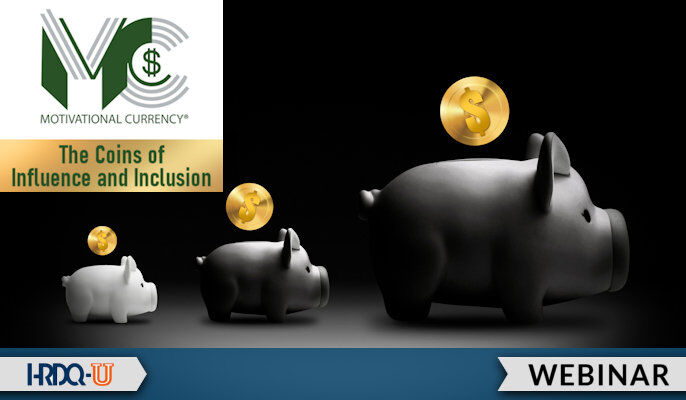The Shift: From Motivating to Inspiring
“How do we keep people motivated with all of this uncertainty and fear?” This is a question I continue to get asked from clients during the Covid-19 crisis. The answer is simple but not easy. What’s needed is a shift from trying to motivate people to inviting people to be motivated. I believe that motivation is personal and needs to come from within. We consistently confuse motivation with inspiration. Inspiration is often short-term. For example, what you experience after hearing a feel-good speech. Gifted speakers tap into your emotions and tell stories that make us feel positive and inspired, but it usually doesn’t last.
Motivation matters more than ever today. The way we lead will either cost us or give us a large ROE, return on our efforts. Aon found that in the current digital age, the impact of reputation events on stocks has doubled. How a company’s management prepares, handles, and behaves following a crisis can add 20% of value or lose 30% of value. According to the World Health Organization, depression and anxiety have a significant economic impact. The approximate cost to the global economy is $1 trillion lost in productivity annually. Given the perfect storm of predictors of anxiety during the COVID-19 crisis, such as lack of control, ambiguity, no clear path, and constant media coverage, that number is likely to be larger. One way to offset these risks and increase engagement is to shift the way you think about motivation and diversify your approach so you meet people where they are.
Diversifying Your Motivational Approach
The type of motivation that increases engagement comes from what naturally drives people and lasts longer than a booster shot of enthusiasm. The way to reach people where they are is to appreciate the diversity of drivers and communication styles in people. A simple way to remember this with Vibe, Vocabulary, and Vision. Vibe is how you interact with people and demonstrate that you genuinely want to play a role in their success. Vocabulary is using language that taps into people’s motivators. Vision is being forward-looking positive, and painting a picture of how individual contributions lead to collective success.
In order to accomplish paying attention to Vibe, Vocabulary, and Vision, our team wanted to create a simple approach to a complex challenge. How do we know what motivates people, and, just as important, what do we do once we know? Think of motivation drivers as a diverse approach to reach people where they are. In his book Human Motivation, Harvard psychologist David McClelland looked at social motives and what drives our behavior inside us. His work led to the development of motivational currency, which is a simple approach to reading and leading based on an appreciation of what drives each individual person. The core four motivators are Performance, People, Power, and Purpose. With fewer in-person interactions and more virtual interactions, it’s even more important to increase the probability of successfully influencing people by suspending your initial instinct and leading with intention.
Four Core Motivational Drivers
As much as we wish it was as simple as a one-size-fits-all when it comes to motivation and much of psychology, people are unique, and we take action based on our personalities, previous experiences, and current situations. Therefore, although most people will have a primary motivator, it is often the case that people have multiple motivators. Someone can be highly motivated and driven by Performance as much as they are by People. The stronger your motivators are in one area, the easier it is for you to make decisions and the more challenging it is to manage your impulses.
Below are descriptions of the four motivators, presented in an intuitive and straightforward way. The goals are to be able to a) recognize what your primary motivators are, b) read what the motivators are for others, and c) lead with intention so you can motivate others quickly and effectively.
Performance
The Performance motivator is about results. Individuals who are driven by performance want to get things done. They pride themselves on not just completing tasks but excelling. A person with a drive for performance thrives on meeting challenges and exceeding standards. They are often fast-paced, direct, and focused on outcomes. Performance-driven people are not afraid to challenge the status quo and expect others to have as much drive as they do.
People
The People motivator is about relationships. Individuals who are driven by the People motivator are most concerned about getting along, teamwork, and collaboration. They are focused on what impact things have on other people. They tend to have a strong social radar and can read people well. In groups, the People driven person is often the person who asks a lot of questions, is inclusive, and focuses on getting everyone’s opinion. A common descriptor of someone who is People-driven is “nice” or “team-oriented.”
Power
The Power motivator is about influence. People who are motivated by Power put a premium on being persuasive and offering their point of view. They often are effective at providing advice and communicating the importance of brand and reputation.
Purpose
The Purpose motivator is about helping others and contributing to something outside of themselves. They often crave having purpose and meaning in their work. Many Purpose-driven people are motivated by developing others or volunteering and community involvement. They excel at getting people to focus on the greater good and can be tremendous enterprise contributors. They can get people to think across business silos and think about what is best for the entire group or business rather than individuals or teams.
Analyzing Motivational Drivers
From analyzing the data we have from the Motivational Currency Calculator across industries, we have found that women rate themselves higher than men on Purpose. Men rate themselves higher on Performance and Power. Men and women are similarly rated on People. Men and women do not differ in their accuracy scores for “Leading,” which is identifying the correct communication approach based on someone’s primary motivator. However, women tend to have a higher accuracy score related to “Reading,” which is how effectively one can identify what is someone’s primary motivator. In regard to generations, our team was surprised to learn that millennials have more similar motivation profiles to baby boomers than Generation X. Millennials rate themselves highest on Power and Purpose. Generation X rates themselves highest on Performance. All generations rate themselves similarly to People. Generation X scores highest on “Reading.” The more effort you put into understanding what drives people, the further you will go together.
The Value of Understanding Motivational Drivers
In the midst of these turbulent times, the wisdom of recognizing and nurturing motivational drivers shines brightly. We’ve unveiled the key to sustainable motivation, transcending fleeting inspiration. As we navigate the complexities of the digital age and its effects on reputation, the imperative of understanding motivational drivers becomes evident. By embracing the diversity of what drives us and adopting a holistic approach through Vibe, Vocabulary, and Vision, we can truly meet people where they are, empowering them to thrive. The study of these motivational drivers is not just a pathway to success; it’s a journey of self-discovery and profound leadership. So, remember, in a world fraught with challenges, the real currency of influence lies in understanding and igniting these powerful motivational drivers within ourselves and others.
















